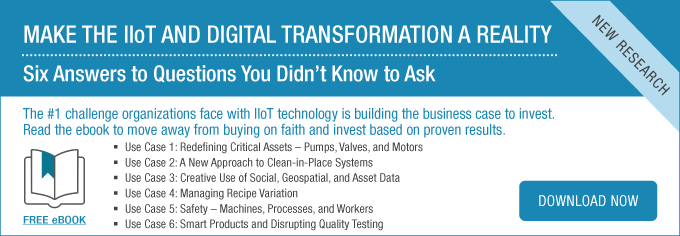This week’s industrial roundup includes a discussion on energy management and efficiency, the emerging smarter manufacturing enterprise, strategies for becoming demand-driven with cloud-computing, and building a business case for industrial energy management (IEM) software.
Don't forget, feel free to email (natalie.tarutis@lnsresearch.com) or tweet (@NTarutis) me anything you'd like considered for LNS's weekly roundup. Enjoy!
Linking buildings, streetlights, and city vehicles in an enterprise IT framework
Did you know that Boston’s electric bill amounts to $55 million a year? Or that it was recently named the most efficient large U.S city? Neither did we. That recognition does not mean that the driving forces behind energy management projects lighten up, it’s quite the opposite. This past week, Schneider Electric announced its biggest city-wide project yet in the place that our team calls home, Boston. This initiative aims to capture data from 350 facilities, 850 traffic lights, 64,000 street lights, and 3,100 city vehicles to help meet efficiency and environmental goals. GreenTech Media provides an in-depth discussion about this project and the projected system implementations, read more.
Tweet this article | Share on LinkedIn
Smart factory: the merging of information technology with manufacturing technology (in real time), advanced production lines, and additional functionalities that exist due to technological advancements. It’s one thing to complete this process and succeed at doing so in a single factory, but it's another thing to roll this concept out on a global scale. Hence, the terminology of smart manufacturing enterprise has emerged. So, what would this single functioning machine look like? Tom Comstock of Apriso provides his explanation on a view that many manufacturing CEOs and analysts believe is just on the horizon. The LNS team had the pleasure of being briefed by Tom Comstock and Gordon Benzie from Apriso and Patrick Michel from DELMIA this week. We are excited and intrigued by the forecasted growth of Apriso as part of DELMIA in support of Dassault Systèmes' vision for connecting the virtual and real worlds. Until then, read Comstock’s view of the advancing space. Until then, read Comstock’s view of the advancing space.
Tweet this article | Share on LinkedIn
What does it take to be demand-driven in the manufacturing industry? Louis Columbus of Plex Systems discusses why accurate forecasting, effective sales and operations processes, and/or stellar new product introductions don’t cut it. In this article, Columbus explores the areas of KPIs, customer data, supply chain, time to market, and organizational collaboration in order to provide a framework for becoming demand-driven and the role that cloud may play throughout the process. What’s the benefit? Well, the highest-performing manufacturers are able to reduce their inventory, have more aligned order fulfillment, a faster payment cycle, and increased customer satisfaction. Demand-Driven Is a Mindset, Not a Mantra.
Tweet this article | Share on LinkedIn
In a recent LNS Research survey on Industrial Energy Management, more than 100 executives responsible for making energy-related decisions were asked what their top energy management challenges were. Top rankings included challenges with effectively measuring energy metrics and having too many disparate systems and data sources. As a result, organizations are moving toward Industrial Energy Management (IEM) software, which is quite possibly one of the most impactful energy efficiency investments. However, its benefits can be indirect and long-term and therefore very challenging to accurately estimate an ROI. As a consequence, companies are much more hesitant to undertake such an investment. In this recent article, Matthew Littlefield examines some of these ROI projection challenges as well as the contributing factors for a successful investment in IEM software. Read More.
Tweet this post | Share on LinkedIn
